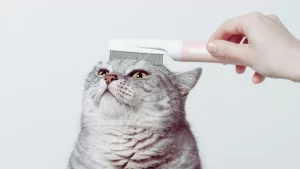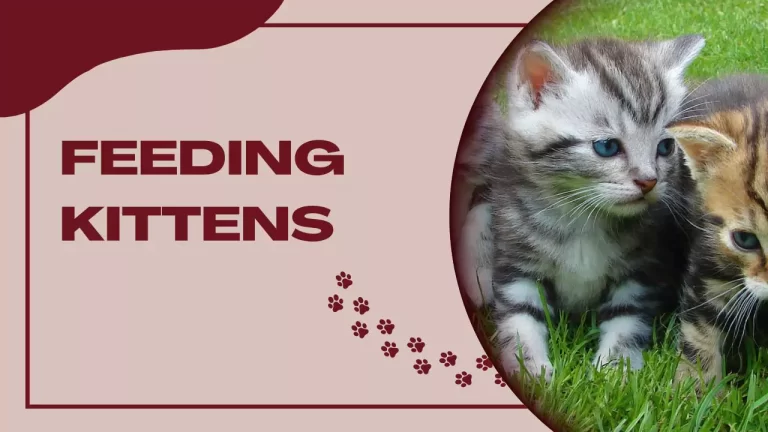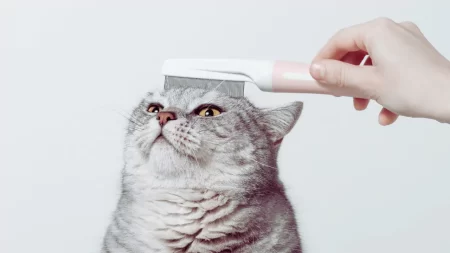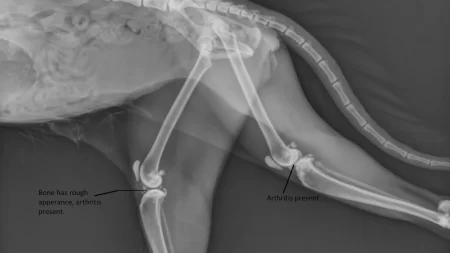Kittens are adorable and energetic creatures that need proper nutrition to grow healthy and strong. But what should you feed your kitten, when should you feed them, and how much food do they need?
This article will answer these questions and provide you with some tips and guidelines on kitten feeding and nutrition.
What to Feed Your Kitten?
Importance of Kitten-Specific Food
Kittens have different dietary requirements than adult cats. They need more protein, calories, calcium, and other nutrients to support their rapid growth and development. Therefore, it is important to feed kittens a nutritionally complete and balanced diet that is specially formulated for their needs. Look for kitten food that has high-quality animal-based protein as the main ingredient, and avoid foods that have a lot of fillers or artificial additives.
Wet vs. Dry Food
Both wet and dry food have their pros and cons for kittens. Wet food is higher in moisture, which can help keep kittens hydrated and support their urinary and kidney health. However, wet food can also stick to the teeth more, which can increase the risk of dental problems. Dry food helps remove tartar and is simpler to feed several cats. However, some kittens may overeat dry food and gain excessive weight, which can lead to health issues such as arthritis, diabetes, or heart problems.
The best option is to feed your kitten a combination of wet and dry food, or a high-quality dry food that has some water added to it. This way, you can provide your kitten with the benefits of both types of food while avoiding the drawbacks. You can also talk to your veterinarian about the best food choice for your kitten based on their age, weight, activity level, and health condition.
Homemade Food Options
Some people may prefer to feed their kittens homemade food instead of commercial food. While this can be done safely and effectively, it requires a lot of research, planning, and preparation. You need to make sure that your homemade food meets all the nutritional needs of your kitten and does not contain any harmful ingredients or toxins. You also need to consult with your veterinarian about the appropriate supplements, vitamins, and minerals that your kitten may need to add to their homemade diet.
If you decide to feed your kitten homemade food, you should follow a reliable recipe from a reputable source, such as a veterinary nutritionist or a cat nutrition book. You should also use fresh, high-quality ingredients that are suitable for cats, such as lean meat, fish, eggs, liver, vegetables, and grains. You should avoid foods that are toxic or dangerous for cats, such as chocolate, onions, garlic, grapes, raisins, bones, raw meat or eggs, dairy products (except yogurt), or human foods that are high in salt, sugar, fat, or spices.
When to Feed Your Kitten?
Feeding Schedule for Kittens
Your new kitten should eat morning, midday, and evening. You can arrange the schedule to fit in with your own routine, but it is best to keep a consistent schedule from day to day. Use the feeding guidelines on the food label as a starting point to determine how much to feed your kitten at each meal. You can also adjust the amount based on your kitten’s appetite, activity level, and body condition.
Transitioning from Milk to Solid Food
Kittens are born with their eyes and ears closed and depend entirely on their mother’s milk for nourishment. Around 3-4 weeks of age, they start to open their eyes and ears and explore their surroundings. This is also the time when they begin to transition from milk to solid food.
To help your kitten make this transition smoothly, you can introduce them to wet kitten food mixed with some warm water or kitten formula. You can offer this mixture in a shallow dish or bowl and let your kitten lick it off your finger or a spoon. Gradually reduce the amount of water or formula and increase the amount of solid food until your kitten is eating only wet food by 6-8 weeks of age.
You can also introduce dry kitten food around 5-6 weeks of age by soaking it in some water or formula until it is soft and mushy. You can then offer this mixture along with wet food and let your kitten choose what they prefer. Gradually reduce the amount of water or formula and increase the amount of dry food until your kitten is eating only dry food by 10-12 weeks of age.
Gradually Increasing Portion Sizes
As your kitten grows and develops, they will need more food to meet their energy and nutritional needs. You should gradually increase the portion sizes of their meals according to their age and weight. You can use a kitchen scale to weigh your kitten regularly and monitor their growth rate. You can also use a body condition score chart to assess whether your kitten is underweight, overweight, or ideal.
How Much to Feed Your Kitten?
Age and Weight Considerations
The amount of food your kitten needs depends on several factors, such as their age, weight, activity level, and health condition. As a general rule, you can follow these guidelines for how much to feed your kitten based on their age and weight:
- 4-8 weeks old: 1/2 tablespoon of wet food or formula per meal, 3 times a day
- 8-12 weeks old: 1 tablespoon of wet food or 1/4 cup of dry food per meal, 3 times a day
- 12-16 weeks old: 1.5 tablespoons of wet food or 1/3 cup of dry food per meal, 3 times a day
- 16-20 weeks old: 2 tablespoons of wet food or 1/2 cup of dry food per meal, 3 times a day
- 20-24 weeks old: 2.5 tablespoons of wet food or 2/3 cup of dry food per meal, 3 times a day
- 24-28 weeks old: 3 tablespoons of wet food or 3/4 cup of dry food per meal, 3 times a day
- 28-32 weeks old: 3.5 tablespoons of wet food or 1 cup of dry food per meal, 3 times a day
These are only approximate amounts and may vary depending on the type and quality of the food you are feeding your kitten. You should always check the feeding instructions on the food label and consult with your veterinarian for more specific recommendations.
Understanding Portion Sizes
It can be tricky to measure the exact amount of food your kitten needs at each meal. One way to make it easier is to use a measuring cup or spoon and fill it according to the feeding guidelines on the food label. Another way is to use your hand as a guide and estimate the portion size based on the size of your palm, fingers, or thumb.
For example, one tablespoon of wet food is about the size of your thumb, one teaspoon of wet food is about the size of your fingertip, and one ounce of dry food is about the size of your palm.
You can also use a digital kitchen scale to weigh the food before you serve it to your kitten. This can help you be more accurate and consistent with the portion sizes.
Monitoring Weight and Growth
One of the best ways to determine how much to feed your kitten is to monitor their weight and growth regularly. You should weigh your kitten at least once a week using a digital kitchen scale and record their weight in a notebook or an app. You should also measure their length and height using a measuring tape and compare them with the average growth charts for kittens.
By tracking your kitten’s weight and growth, you can see if they are growing at a healthy and normal rate and adjust their feeding accordingly. You can also check their body condition score by feeling their ribs, spine, and abdomen and looking at their waist and belly.
A healthy kitten should have a visible waist when viewed from above, a slight tummy tuck when viewed from the side, and a thin layer of fat covering their ribs and spine. You should be able to feel their ribs and spine easily but not see them.
If your kitten is too thin, you may need to increase their portion sizes or feed them more frequently. If your kitten is too fat, you may need to decrease their portion sizes or feed them less frequently.
You should also consult with your veterinarian regularly and get their advice on how much to feed your kitten based on their individual needs.
Conclusion
Feeding kittens is not as simple as it may seem. You need to consider what, when, and how much to feed them to ensure they get the best nutrition for their growth and development.
You also need to monitor their weight and growth regularly and adjust their feeding as needed.
By following these tips and guidelines, you can provide your kitten with a healthy and balanced diet that will support them throughout their life.







